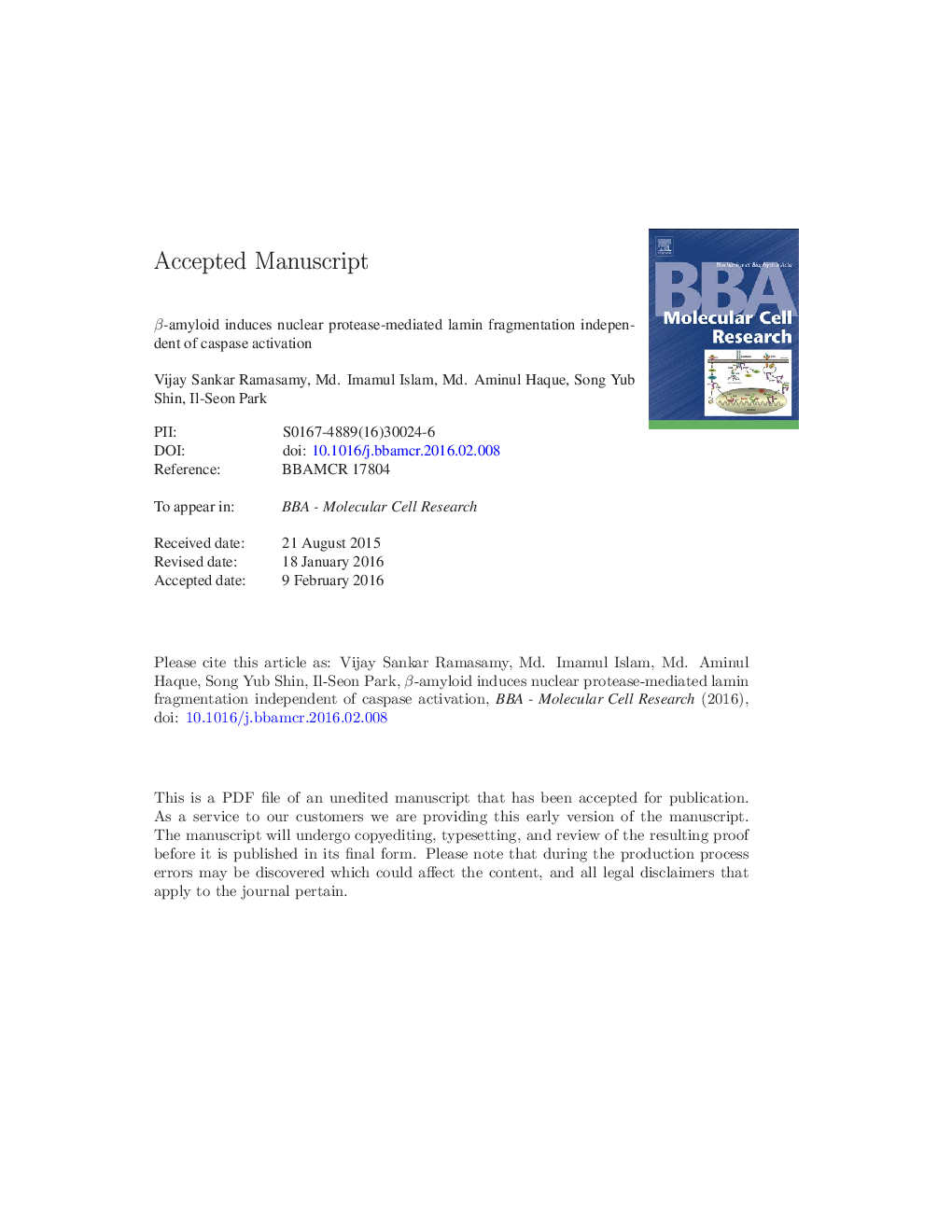| Article ID | Journal | Published Year | Pages | File Type |
|---|---|---|---|---|
| 10801834 | Biochimica et Biophysica Acta (BBA) - Molecular Cell Research | 2016 | 24 Pages |
Abstract
β-Amyloid (Aβ), a hallmark peptide of Alzheimer's disease, induces both caspase-dependent apoptosis and non-apoptotic cell death. In this study, we examined caspase-independent non-apoptotic cell death preceding caspase activation in Aβ42-treated cells. We first determined the optimal treatment conditions for inducing cell death without caspase activation and selected a double-treatment method involving the incubation of cells with Aβ42 for 4 and 6 h (4 + 6 h sample). We observed that levels of lamin A (LA) and lamin B (LB) were reduced in the 4 + 6 h samples. This reduction was decreased by treatment with suc-AAPF-CMK, an inhibitor of nuclear scaffold (NS) protease, but not by treatment with z-VAD-FMK, a pan-caspase inhibitor. In addition, suc-AAPF-CMK decreased the changes in nuclear morphology observed in cells in the 4 + 6 h samples, which were different from nuclear fragmentation observed in STS-treated cells. Furthermore, suc-AAPF-CMK inhibited cell death in the 4 + 6 h samples. LA and LB fragmentation occurred in the isolated nuclei and was also inhibited by suc-AAPF-CMK. Together, these data indicated that the fragmentation of LA and LB in the Aβ42-treated cells was induced by an NS protease, whose identity is not clearly determined yet. A correlation between Aβ42 toxicity and the lamin fragmentation by NS protease suggests that inhibition of the protease could be an effective method for controlling the pathological process of AD.
Related Topics
Life Sciences
Biochemistry, Genetics and Molecular Biology
Biochemistry
Authors
Vijay Sankar Ramasamy, Md. Imamul Islam, Md. Aminul Haque, Song Yub Shin, Il-Seon Park,
